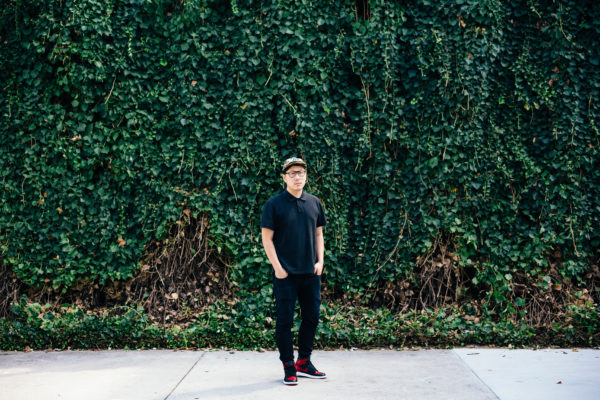Artist and printmaker Jamaal Barber’s pieces illustrate imperative social commentary and narratives about 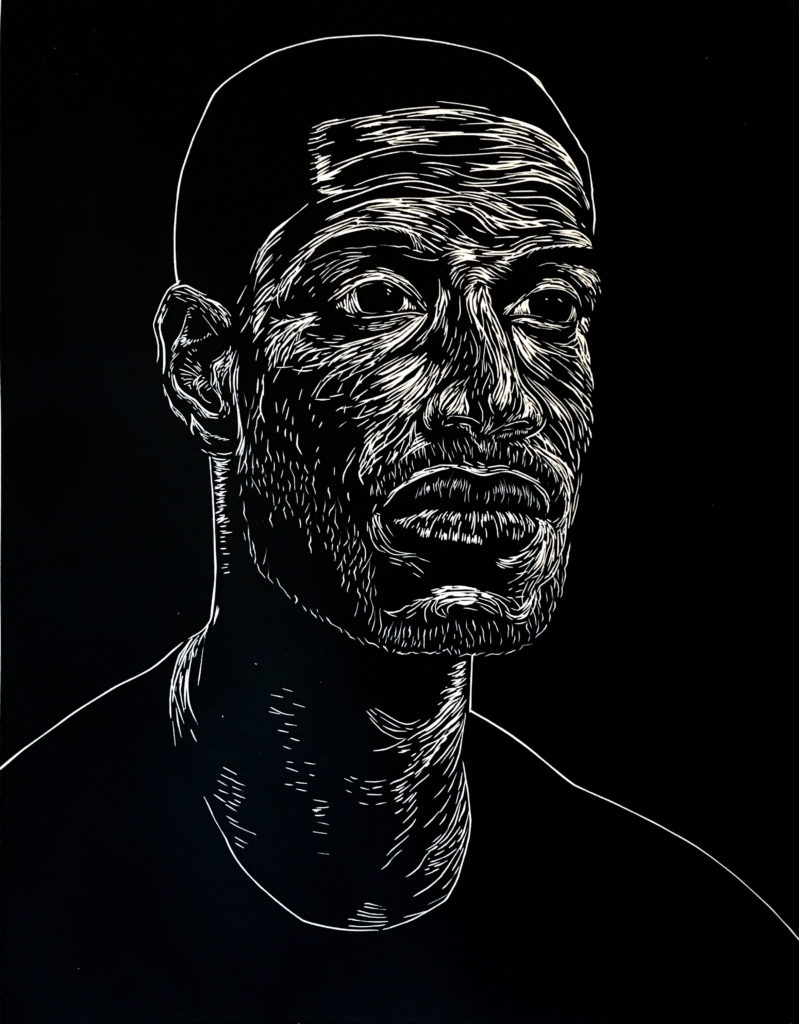 black life and identity. Barber’s message is power, beauty, love, and triumph — which he says is often because of and in spite of the context of his environment.
black life and identity. Barber’s message is power, beauty, love, and triumph — which he says is often because of and in spite of the context of his environment.
Once a graphic designer, Barber was inspired by a screen-printing demo to take the leap and dive deeper into his creative passion. Using his craft as a coping mechanism, a platform for his voice to be heard, and a vehicle to create with others in the community, Barber has been recognized for his work all over the East Coast in places such as Zucot Gallery, Blue Spiral 1 Gallery, The Southern Gallery and more. In addition to being a full-time creator, Jamaal co-hosts the Studio Noize! podcast where he chats with creatives to learn more about their processes and lives.
Below, Barber talks more about “black propaganda,” the importance of community, and what he has in the works.
CommonCreativ: What inspired you to pursue a life as an artist?
Jamaal Barber: Art has always been an escape for me. I used to draw all the time for whatever reason, so I always wanted to be a full-time artist. It’s the whole, “do what you love and you’ll never work again” thing. I had been doing shows around Atlanta for a few years, so when I got laid off from my graphic design job I decided to go for it. There would never be a perfect time to do it. I spent my little severance check and got myself supplies and jumped in.
CC: What got you into screen-printing?
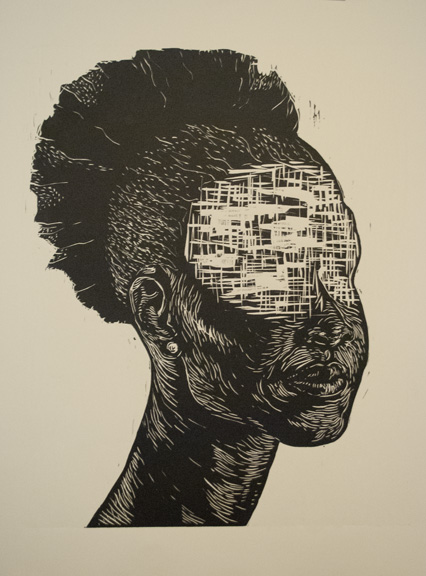 JB: I always liked the look of those rock ‘n’ roll gig posters with the crazy type and wild designs. The imagery was always crazy cool. Like Bride of Frankenstein screaming because a metal band was playing Friday night. Or a crazy three-headed snake wrapped in letters. It seemed like those guys were having a lot of fun. Once I saw how simple the process was, it seemed like a good way to make things. Once I made my first print of Martin Luther King Jr., I was hooked.
JB: I always liked the look of those rock ‘n’ roll gig posters with the crazy type and wild designs. The imagery was always crazy cool. Like Bride of Frankenstein screaming because a metal band was playing Friday night. Or a crazy three-headed snake wrapped in letters. It seemed like those guys were having a lot of fun. Once I saw how simple the process was, it seemed like a good way to make things. Once I made my first print of Martin Luther King Jr., I was hooked.
CC: What was it about the screen-printing process that sparked your interest?
JB: I think I understood the process of it. With my graphic design background, I would do separations for production, and I understood how to piece things together. I felt like I was looking for a way to say what I wanted to say, in a way that I never really felt when I was painting. I would get lost in painting and not really know how to get it to do what I wanted. Seeing that demo, I just knew what to do. I realized I needed the process to focus. I bought everything I needed that day and the rest is history. I was exposing screens in my closet with a 300-watt light bulb and making prints.
CC: Describe your technique.
JB: I carve wood blocks, roll ink on them and run them through a printing press. It’s like creating a big stamp that lets me create multiple images of the same design. The fun really starts after that, when I take the prints and add more and more layers of pattern and design with screenprinting.
CC: How would you describe the message your art carries?
JB: I refer to my art as black propaganda. I’m creating images and narratives that tell the story of the black American experience. I push back against negativity and uplift the humanity of us. It’s not all struggle and rage, either. I talk about love and family. My experience growing up in a small town [called Littleton] in North Carolina has shaped a lot of how I feel about this country, in a good and bad way. I put all of that into my art.
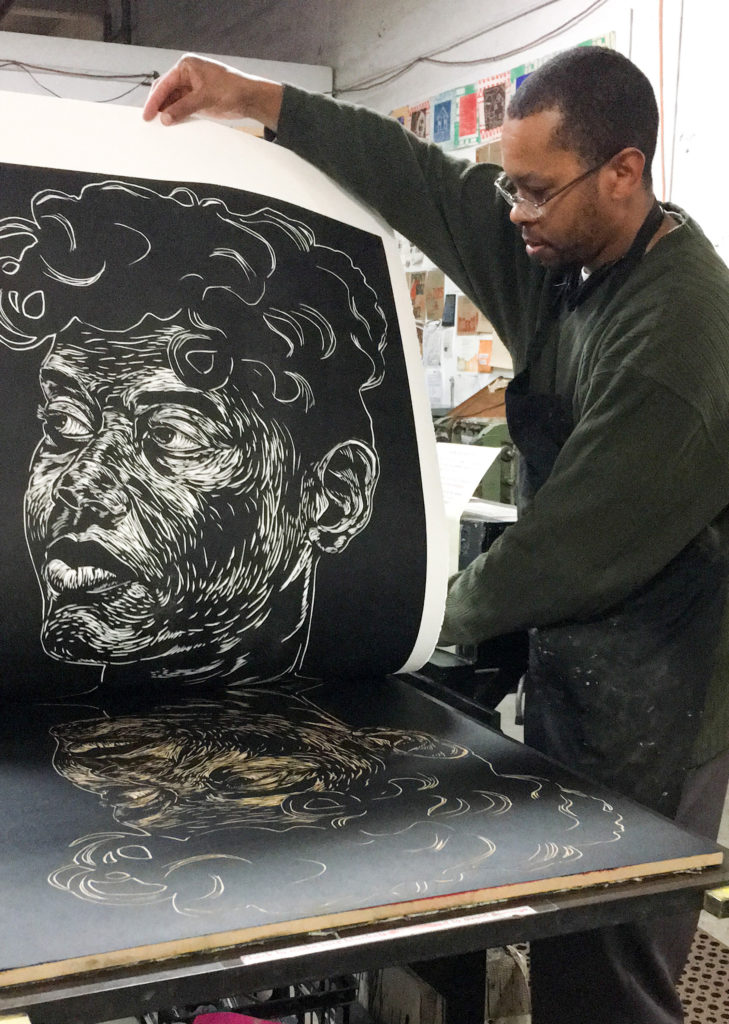
Artist Jamaal Barber // Photo by John Stephens
CC: What inspires you, especially as it relates to black identity?
JB: I have two kids. I have to keep them safe and teach them how to live in this country. I have to raise them to be good, loving people, smart and determined. But also make them aware that things will happen to you because of your skin color and there is nothing you can do but try to overcome it. A lot of times I read about what black people have been through and I get scared for my kids. Our experiences are not too far removed from the past. I need to know how I’m dealing with it in order to help them deal with it. I deal with it all through my art. It’s how I always coped with things. So I put my anxiety there. I make my statements there.
CC: Tell me about your favorite piece of art you’ve created.
JB: I’ve had a lot of favorites over the years. Right now, it’s a piece called “The Council.” It was part of my solo show, called Bright Black, where I was exploring what it means to be black. It was a four-foot woodcut that talked about the connectivity of blackness. For me to understand blackness, I have to understand everyone’s experience of blackness since I can’t expect to get treated any differently than any other black person before me or after me. The five faces are different styles and features but are all connected. It was big and bold. I like that one a lot.
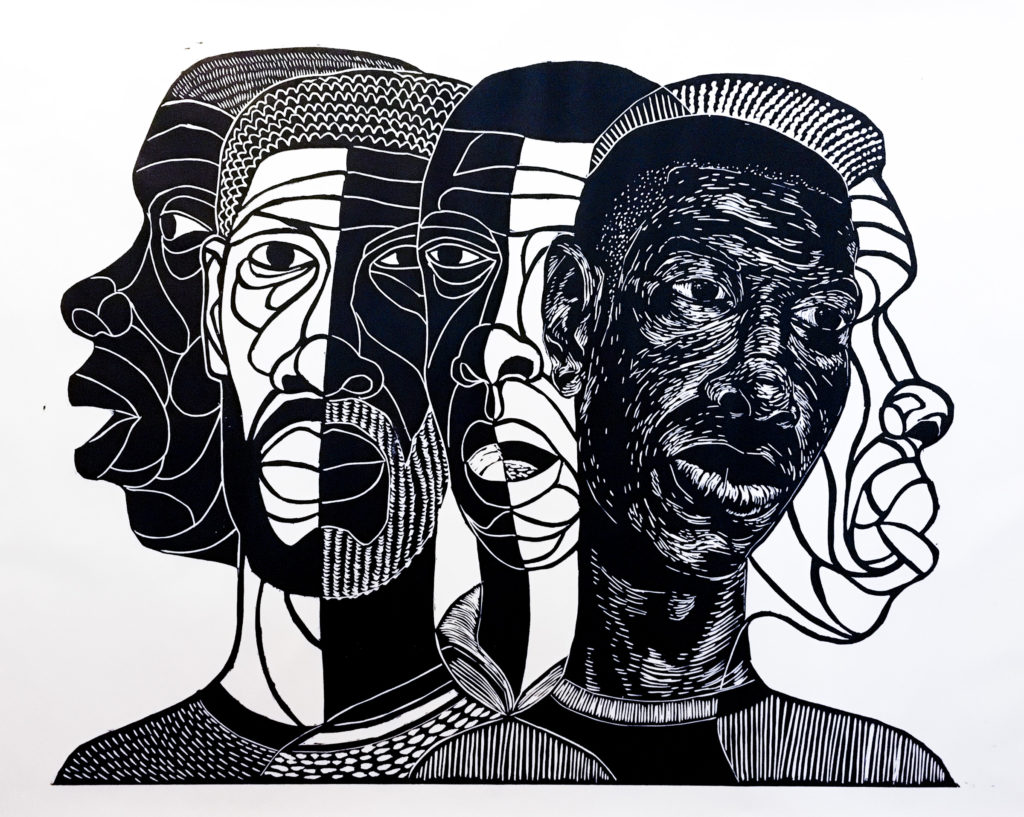
“The Council”
CC: What can we look forward to seeing from you next?
JB: I’m doing a lot of collaborations that I’ll reveal in a show next year. I love the creative energy of working with another artist. We’re making something different and better than we would make on our own. Collaborating will be a big part of what I do going forward. Other than that, I’m in grad school for the next two and a half years [at Georgia State University]. I feel like it’s going to push my work in a lot of new directions and that’s very exciting. I don’t know what it will end up looking like but that’s awesome, isn’t it? I can’t wait to see it.
CC: How do you feel about the local arts scene?
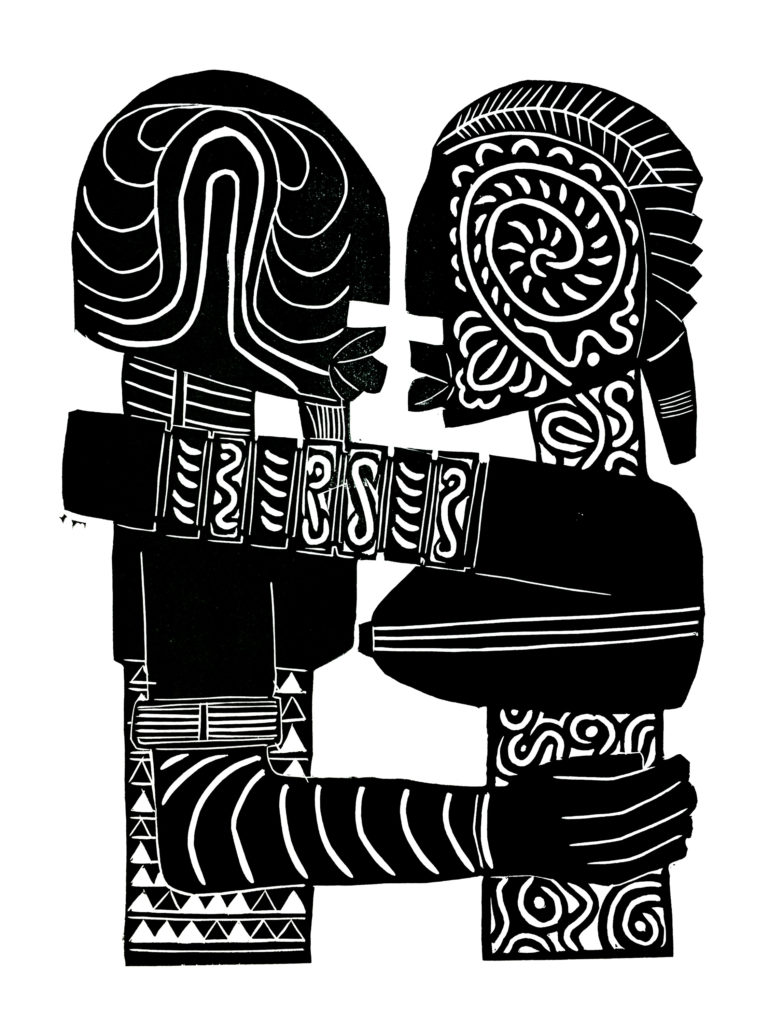 JB: Atlanta has an amazing art community. I don’t call it a “scene.” It’s a community. We create together. We do shows together. We support each other. We watch each other’s kids. We buy each other’s art. Every artist I’ve met has been open and extremely helpful to me.
JB: Atlanta has an amazing art community. I don’t call it a “scene.” It’s a community. We create together. We do shows together. We support each other. We watch each other’s kids. We buy each other’s art. Every artist I’ve met has been open and extremely helpful to me.
I don’t think I would be making the work I make if not for all the people that let me in their studio to talk and encourage me to keep working. They let me know about shows coming up. They wanted me to succeed. That’s why I always go out of my way to help anybody that asks. It’s paying it forward, and all the artists I know feel the same way and do the same thing.
CC: What keeps you in Atlanta?
JB: I came down here chasing my wife and now we have two kids. Somehow I found a connection to a great arts community. Between Atlanta Printmakers Studio and all the events and opportunities for art here, I haven’t been anywhere that compares to it. Atlanta feels like home.
See more of Jamaal’s work on his portfolio site, Instagram, and Twitter.





